1. What is vegetal chitosan?
Chitosan is a natural biopolymer that is primarily derived from chitin, which is the second most abundant natural polysaccharide after cellulose. Chitin is commonly found in the exoskeletons of crustaceans like crabs, shrimps, and lobsters, as well as in the cell walls of certain fungi like mushroom, aspergillus niger.
Structure and Properties:
- Chemical Structure: Chitosan is obtained by deacetylating chitin. This process involves removing acetyl groups from chitin, resulting in a polymer that has free amine groups.
- Solubility: Unlike chitin, chitosan is soluble in acidic to neutral solutions, making it more versatile for various applications.
- Biocompatibility and Biodegradability: Chitosan is known for its excellent biocompatibility and biodegradability. It’s non-toxic and can be broken down by natural biological processes.

Chitosan, sometimes known as deacetylated chitin, is a natural polycationic linear polysaccharide derived from partial deacetylation of chitin. Chitin is the structural element in the exoskeleton of insects, crustaceans (mainly shrimps and crabs shell), and cell walls of fungi (oyster mushroom, agaricus bisprous and aspergillus niger), and also is the second most abundant natural polysaccharide after cellulose.

Chitosan, a natural polysaccharide prepared of fungal origin, is initially extracted and purified from reliable and abundant food or biotechnological fungal sources such as Agaricus bisporus or Aspergillus niger.
Chitosan is composed of glucosamine sugar units (deacetylated units) and N-acetyl-D-glucosamine units (acetylated units) interconnected by ß→(1.4) type linkages.
Uses and Applications:
- Medical and Pharmaceutical Fields: Due to its biocompatibility and non-toxic nature, chitosan is used in wound healing, drug delivery systems, and as a biomaterial in tissue engineering.
- Water Treatment: Its ability to bind with heavy metals and other contaminants makes it useful in water purification and treatment processes.
- Agriculture: As a natural biostimulant and elicitor, chitosan is used to enhance plant growth and provide resistance against pathogens.
- Food Industry: It’s used as a food additive for its antimicrobial properties, and as an edible film or coating to enhance the shelf life of perishable food products.
- Cosmetics and Personal Care: In this realm, it finds use as a thickener, moisturizer, and film-forming agent, particularly in hair and skin care products.

Chitosan has been widely used in various fields, including wine, pharmaceuticals, dietary supplement, medicine, agriculture, and food industries, due to its biocompatibility, biodegradability, and non-toxicity. In recent years, researchers have investigated the use of vegetal chitosan, which is derived from fungal or plant sources, as a sustainable alternative for use in wine applications.
Variants:
- Traditional Chitosan: Traditionally sourced from marine crustaceans.
- Vegetal Chitosan: Derived from fungal sources, offering an alternative for those seeking non-animal derived products.
In summary, chitosan’s versatility, biodegradability, and non-toxic nature make it a valuable material across various industries, from healthcare to cosmetics. Its ability to be derived from non-animal sources also makes it an appealing option for vegetarian and vegan-friendly products.
2. What are the advantages of vegetal chitosan?
Vegetal chitosan, also known as fungal chitosan or mycelium chitosan, is a type of chitosan derived from the cell walls of fungi (mushroom and aspergillu niger). It has several advantages over traditional chitosan derived from shellfish, including:

- 1. Vegan and vegetarian-friendly: Vegetal chitosan is an excellent alternative for individuals who avoid animal-based products, such as those who follow a vegan or vegetarian lifestyle.
- 2. Allergen-free: Traditional chitosan is derived from shellfish, which can cause allergic reactions in some people. Vegetal chitosan does not contain any shellfish-derived ingredients, making it an allergen-free option.
- 3. Purer: Vegetal chitosan is often considered to be purer than traditional chitosan because it is derived from a single source, whereas traditional chitosan can be contaminated with other shellfish-related substances.
- 4. Better solubility: Vegetal chitosan is more soluble than traditional chitosan, which makes it easier to incorporate into various applications such as cosmetics, pharmaceuticals, wine and food.
- 5. Improved bioavailability: Some studies have suggested that vegetal chitosan has a higher bioavailability compared to traditional chitosan, which means that it can be absorbed and utilized more effectively by the body.
Overall, vegetal chitosan offers several advantages over traditional chitosan, making it an attractive alternative for individuals and industries looking for a vegan, allergen-free, and more effective chitosan source.
3. What are the benefits of vegetal chitosan in dietary food supplement?
Vegetal chitosan, a fungal-derived alternative to traditional chitosan, offers various benefits and functions when used as a dietary supplement. Here’s a detailed overview:
Benefits of Vegetal Chitosan in Dietary Supplements:
- Fat Binding and Weight Management: It can bind to dietary fats in the digestive system, potentially reducing their absorption and aiding in weight management.
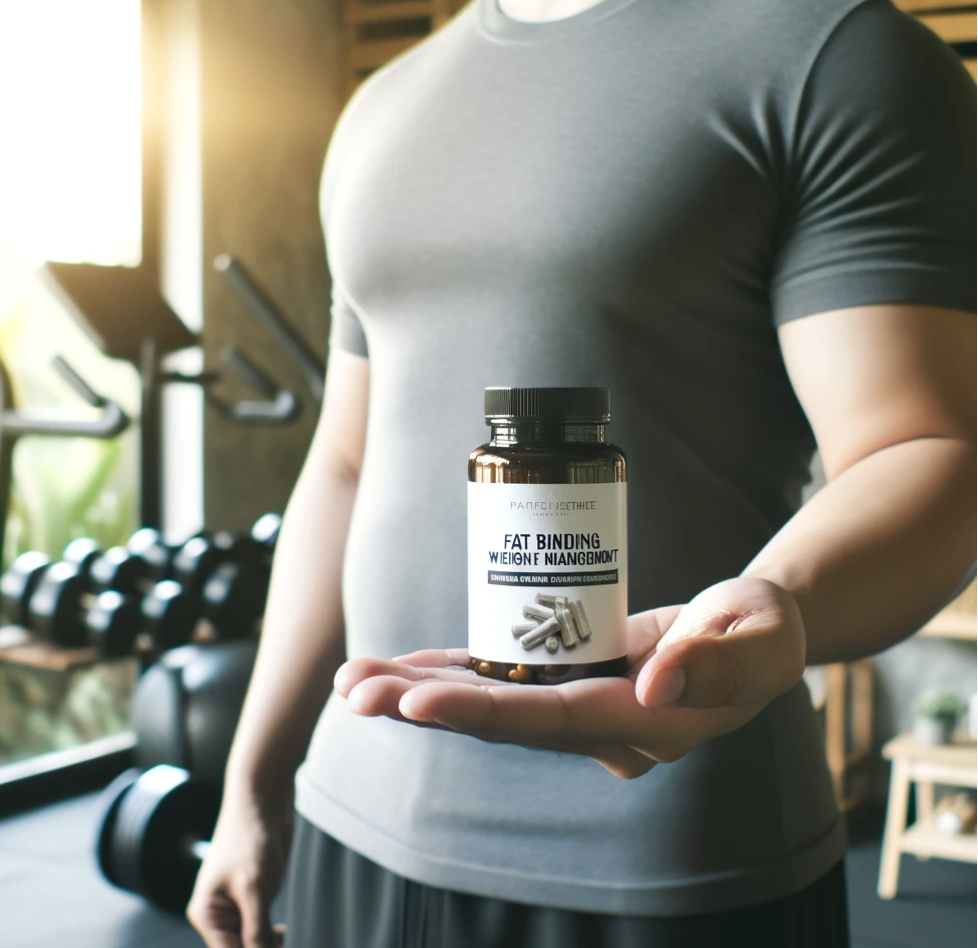
- Cholesterol Reduction: May help in lowering cholesterol by binding to it in the gut, thus reducing its absorption into the bloodstream.

- Gut Health Promotion: Acts as a dietary fiber, contributing to gut health. It might also have prebiotic properties, supporting beneficial gut microbiota.

- Blood Sugar Regulation: It may assist in stabilizing blood sugar levels, beneficial for those with diabetes or insulin resistance.
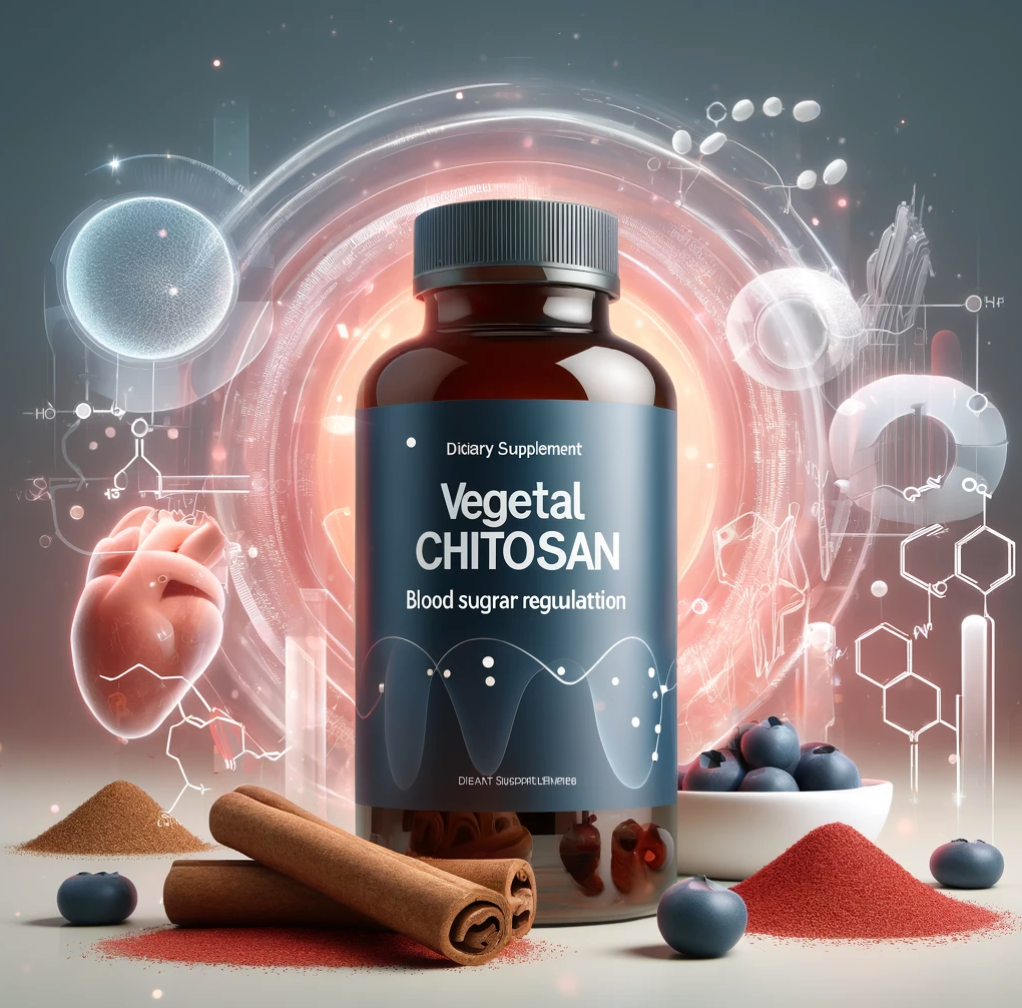
- Detoxification: Capable of binding to toxins and heavy metals, facilitating their excretion from the body.
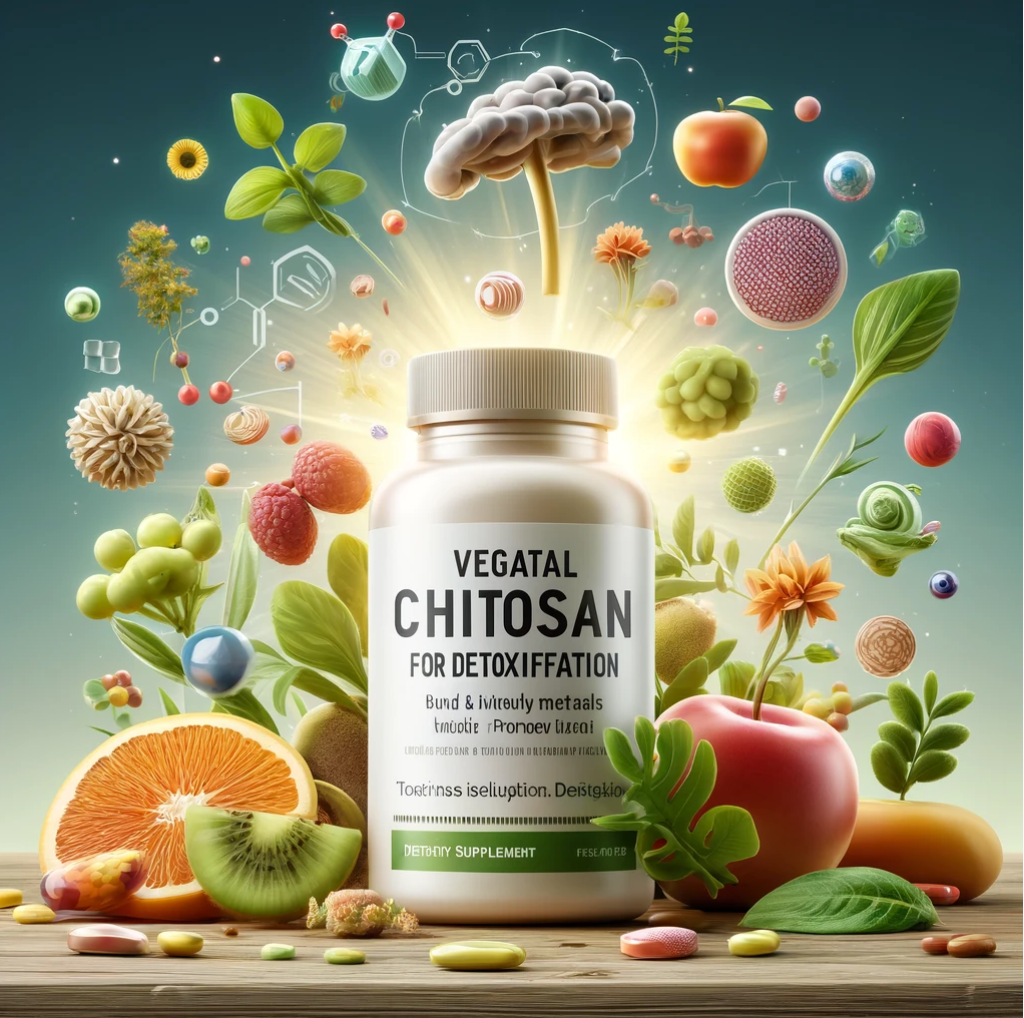
- Immune Support: There’s evidence to suggest that it can boost the immune system, though more research is needed.
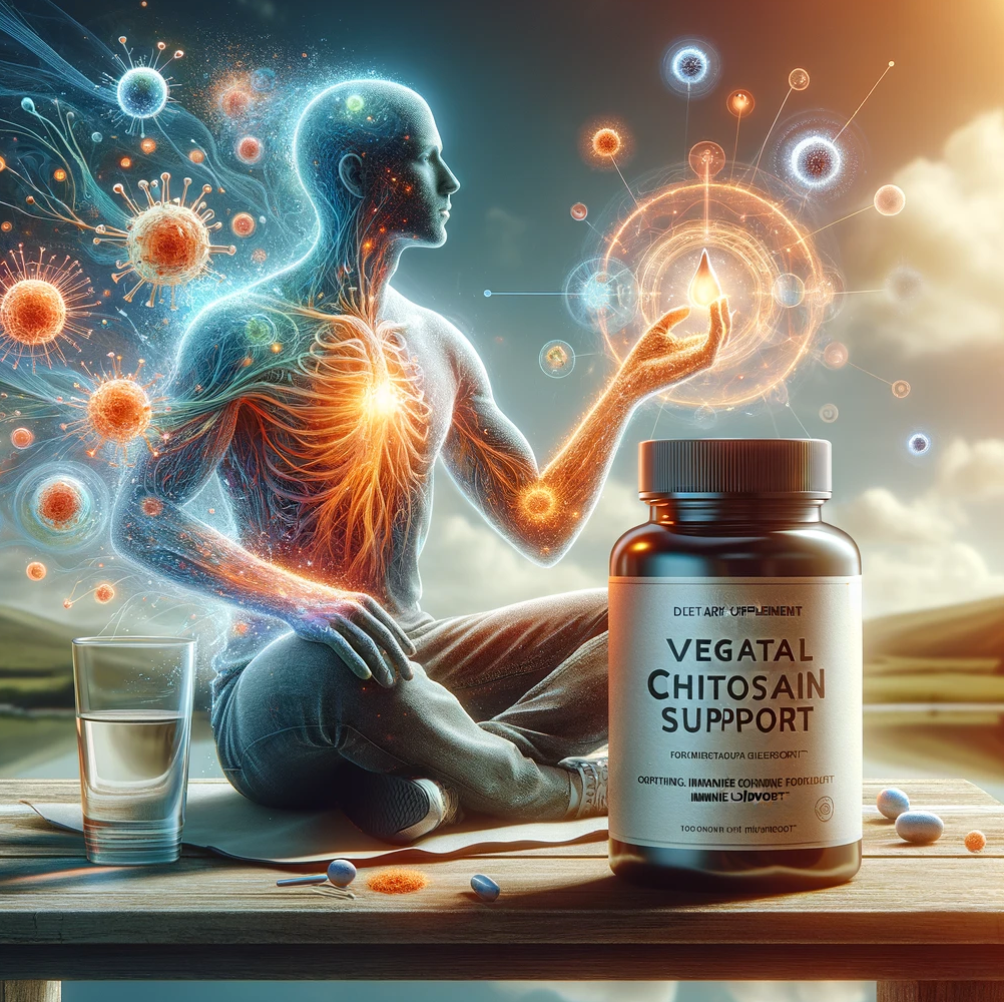
- Bone Health: Aids in calcium absorption, potentially improving bone health.

- Antioxidant Effects: Possesses antioxidant properties, combating oxidative stress in the body.

4. What are the functions of vegetal chitosan in dietary food supplement?
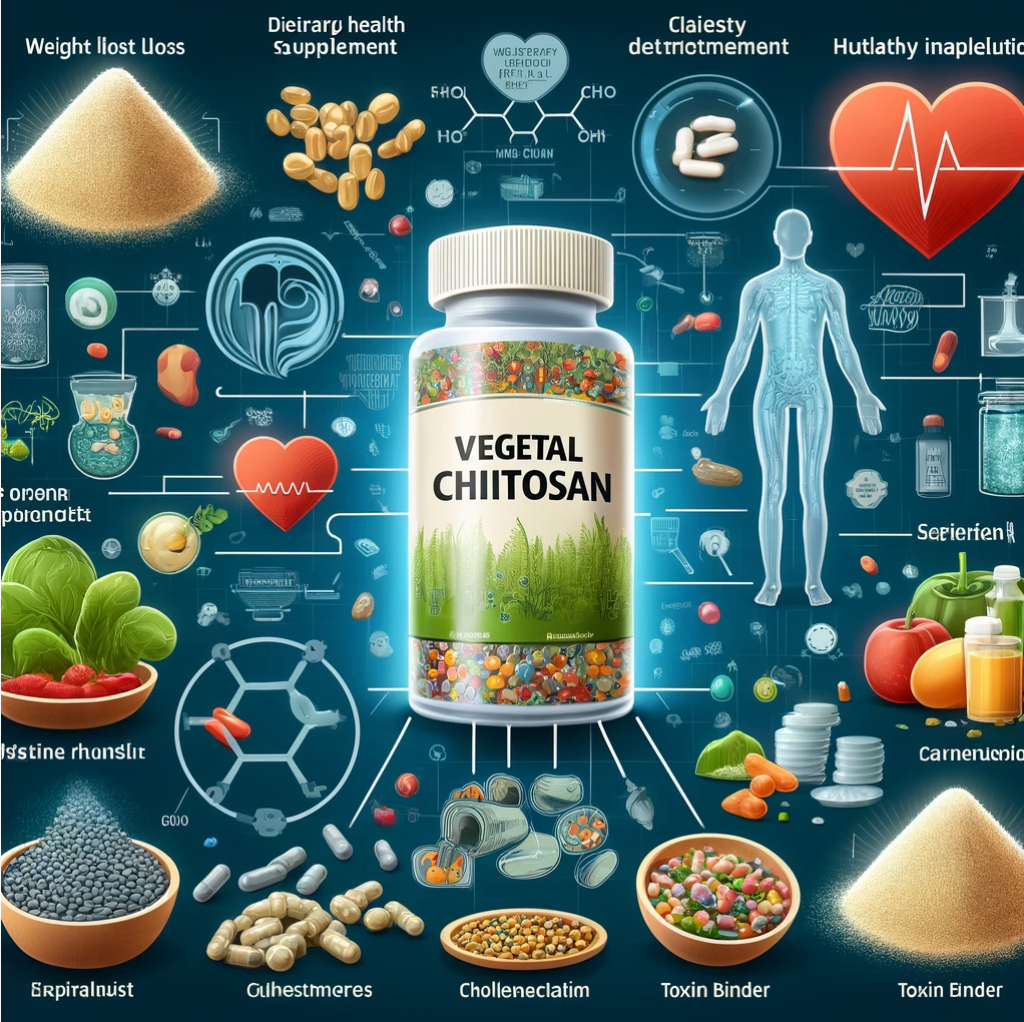
Functions in Dietary Supplements:
- Active Ingredient: Often used as the primary active ingredient in weight loss and cholesterol management supplements.
- Fiber Supplement: Serves as a source of dietary fiber.
- Toxin Binder: Utilized for its ability to bind to and help remove toxins from the body.
5. What are the recommended dosage of vegetal chitosan in dietary / food supplement formula?
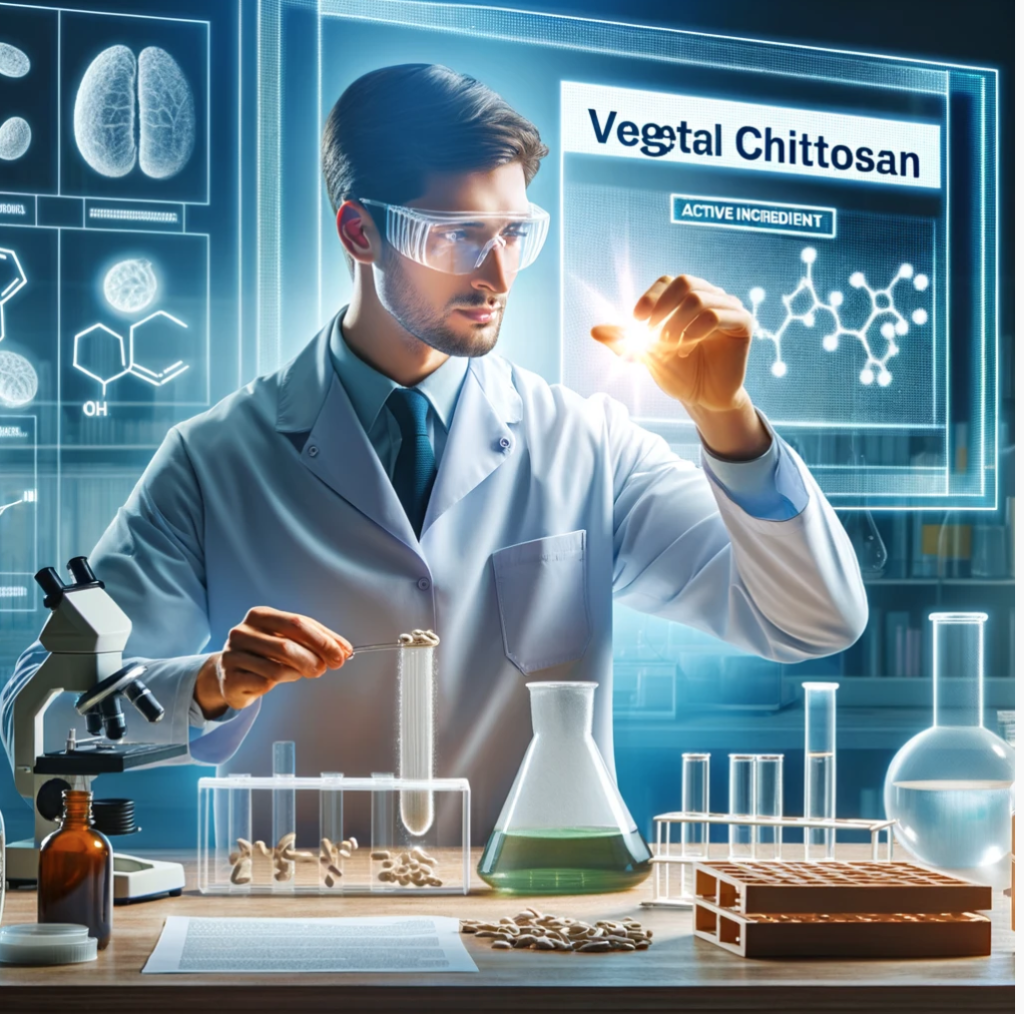
Recommended Dosage:
- The optimal dosage of vegetal chitosan in dietary supplements varies based on the intended use and individual health needs.
- For Weight Management and Cholesterol Reduction: Doses typically range from 500 to 3000 mg per day, usually taken before meals.
- As a Fiber Supplement: Dosage can vary widely but should be balanced with adequate water intake.
- For Other Health Benefits: Specific dosages may depend on the formulation and concentration of the chitosan in the supplement.
In summary, vegetal chitosan in dietary supplements offers several health benefits, particularly in weight management, cholesterol control, and gut health. The dosage should be tailored to individual needs and health goals, and professional consultation is recommended for personalized advice.
6. What is the flowchart of vegetal chitosan processing?
The production process of plant chitosan is mainly obtained by extracting raw materials (mushrooms, Aspergillus niger), deproteinizing with dilute acid or alkali, deacetylating, drying, etc.
Here is a simplified flowchart of the production process of vegetal chitosan for your reference.
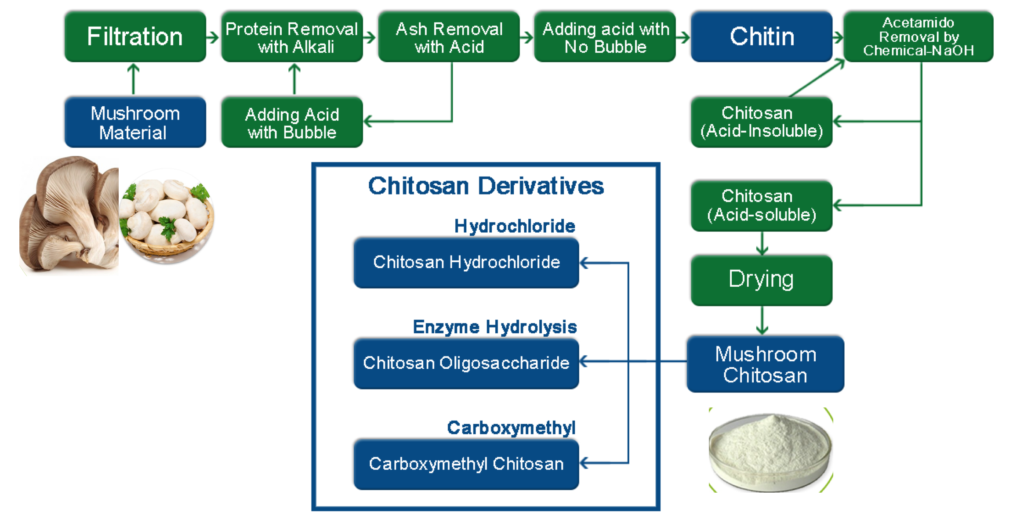
The flowchart of mushroom chitosan illustrates the process of producing chitosan and its derivatives from mushroom material. Here’s a summary of the key content:
- Starting Material: The process begins with mushroom material as the source.
- Filtration: The mushroom material undergoes a filtration process.
- Protein Removal: Proteins are then removed from the filtered material using an alkali solution.
- Ash Removal: Ash content is subsequently removed with acid.
- Chitin Extraction:
- Acid is added without bubbles to proceed to the next stage.
- Chitin is extracted, which is not soluble in acid.
- An acetylation step removes the acetyl groups from the chitin using sodium hydroxide (NaOH), converting it into chitosan, which is soluble in acid.
- Drying: The acid-soluble chitosan is then dried to produce the final mushroom chitosan product, showcased as a white powder.
- Chitosan Derivatives: Parallel to the drying process, there is a branch leading to the production of various chitosan derivatives:
- Chitosan Hydrochloride: Chitosan converted into its hydrochloride form.
- Enzyme Hydrolysis: Produces chitosan oligosaccharide through enzymatic hydrolysis.
- Carboxymethyl Chitosan: Derived through the carboxymethylation of chitosan.
The flowchart depicts a methodical approach to converting mushroom material into various forms of chitosan, focusing on the purification and chemical modification steps necessary to achieve different chitosan-based products for use in various applications.
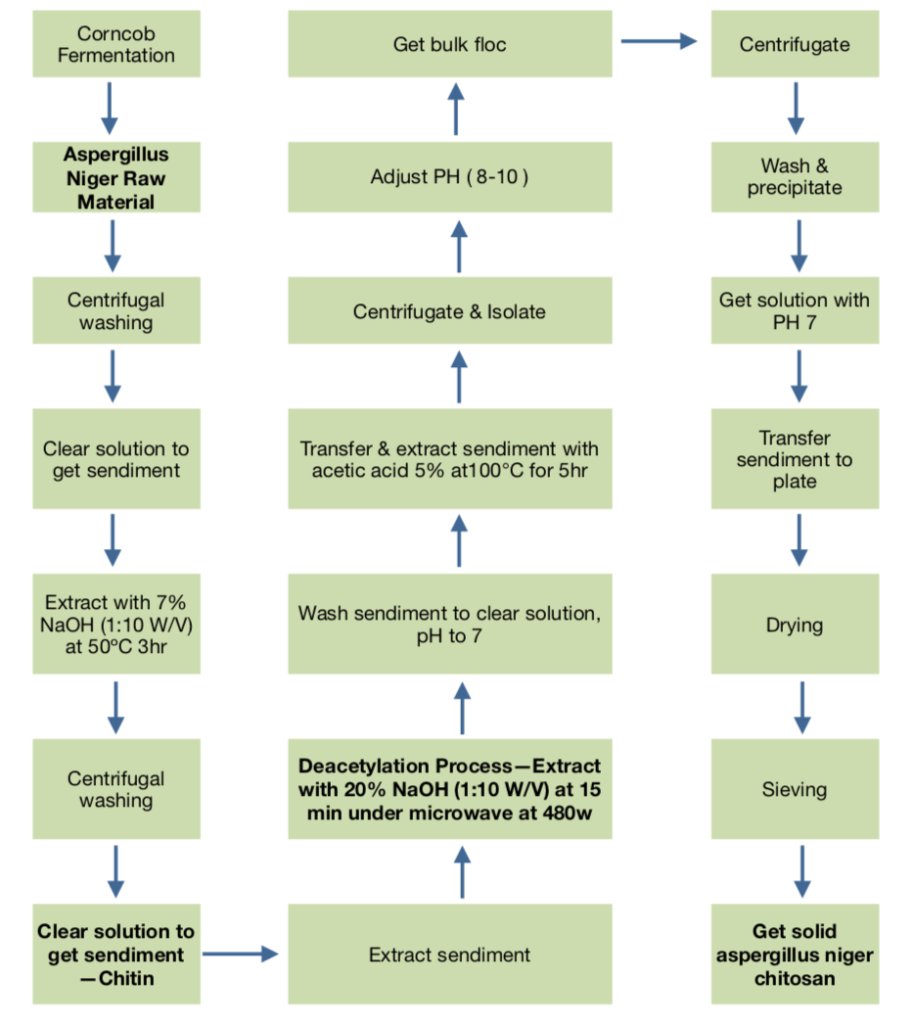
The flowchart of aspergillus niger chitosan outlines the process for extracting chitosan from Aspergillus niger, a type of fungus. Here’s a step-by-step summary of the key points:
- Starting Material: Aspergillus niger is cultured through a fermentation process using corn.
- Extraction:
- The fungal biomass undergoes a bulk flocculation.
- This is followed by centrifugation to separate the components.
- The pH of the resulting material is adjusted to alkaline conditions (pH 8-10).
- Another round of centrifugation and isolation occurs.
- The pH is adjusted back to neutral (pH 7), and the sediment is washed and precipitated.
- The sediment is then extracted with 5% acetic acid at 100°C for five hours to get the clear solution.
- It is washed again to achieve a clear solution with a neutral pH.
- Chitin Production:
- The clear solution is treated with 7% sodium hydroxide (NaOH) at a ratio of 1:10 (W/V) at 50°C for three hours.
- Centrifugal washing follows, resulting in the production of chitin as a clear solution to get the sediment.
- Deacetylation:
- The sediment undergoes the deacetylation process. It’s treated with 20% NaOH at a ratio of 1:10 (W/V) and heated in a microwave at 480W for 15 minutes.
- This step is crucial to convert chitin into chitosan by removing acetyl groups.
- Final Steps:
- The final sediment, which is now deacetylated chitin or chitosan, is extracted.
- It undergoes drying, followed by sieving to achieve the desired particle size.
- End Product: The final product is solid Aspergillus niger chitosan.
This process includes several steps involving pH adjustment, centrifugation, chemical treatments, and heating, which are critical to ensuring the purity and quality of the chitosan extracted from Aspergillus niger.
7. In summary of vegetal chitosan in dietary food supplement application
Vegetal chitosan, derived from fungal sources, presents a multitude of benefits and functions when included in dietary or food supplements. Primarily known for its weight management properties, vegetal chitosan has the ability to bind dietary fats in the digestive system, which can help in reducing their absorption and potentially aiding in weight control. It’s also recognized for its role in cholesterol management, as it can bind with cholesterol in the gastrointestinal tract, thus reducing its absorption and potentially lowering overall cholesterol levels. Another significant benefit is its contribution to gut health; acting as a dietary fiber, it can enhance gut flora balance and overall digestive health.
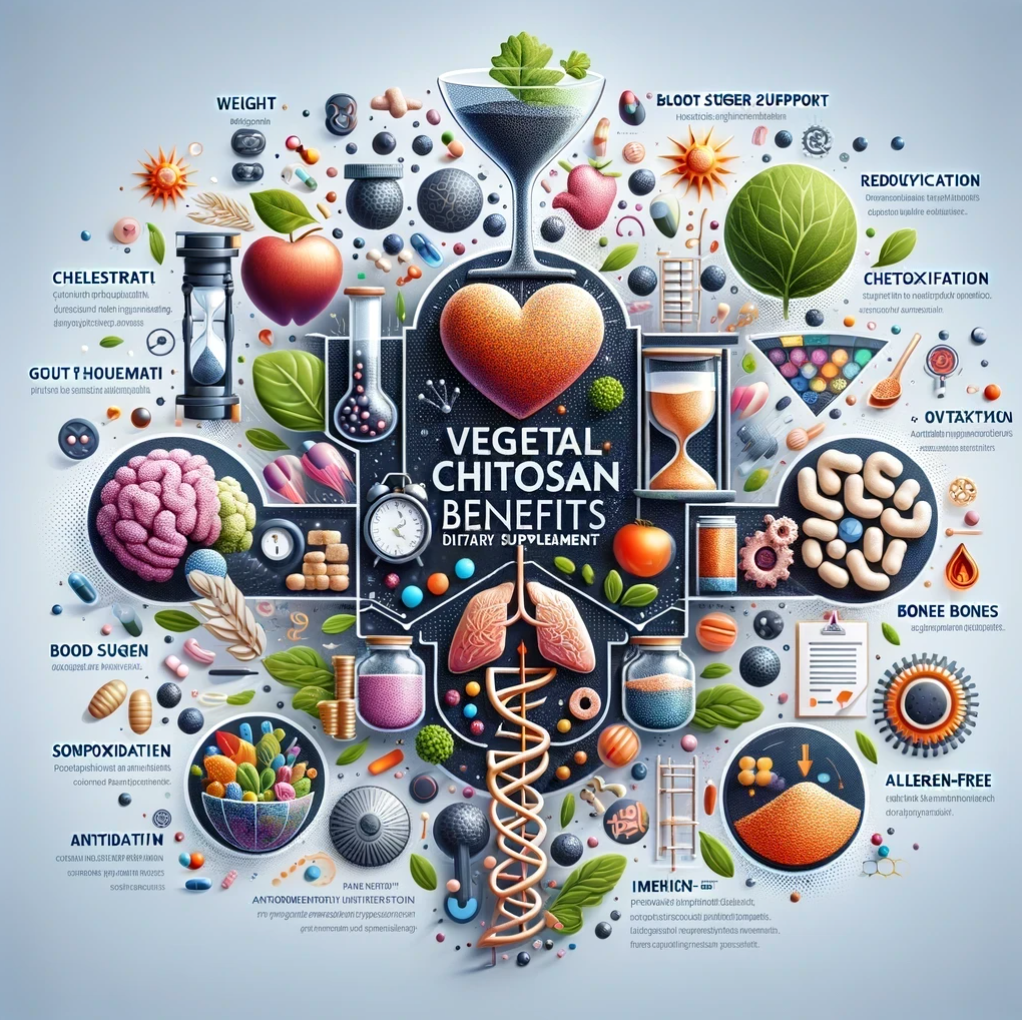
In addition to these primary functions, vegetal chitosan also shows promise in blood sugar regulation, making it beneficial for individuals with or at risk of diabetes. Its detoxification properties, wherein it binds to toxins and heavy metals, facilitate their excretion from the body. It also supports bone health by aiding in calcium absorption. The antioxidant properties of vegetal chitosan contribute to reducing oxidative stress in the body.
Furthermore, emerging research suggests potential roles in immune system enhancement, offering an allergen-free alternative for those sensitive to shellfish-based chitosan, and exploring its anti-aging effects. This array of benefits makes vegetal chitosan a versatile and valuable component in dietary supplements, catering to a wide range of health and nutritional needs.

